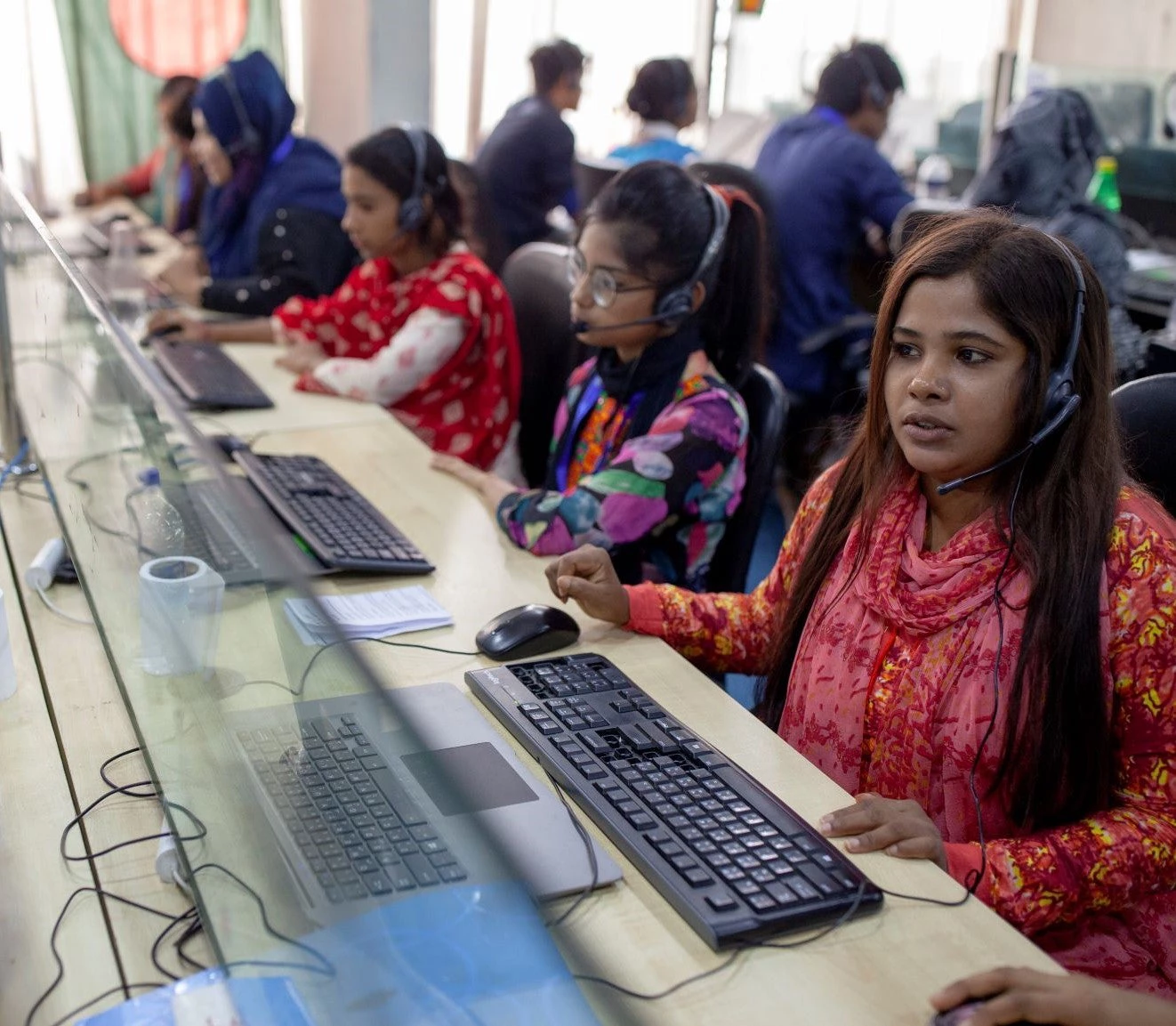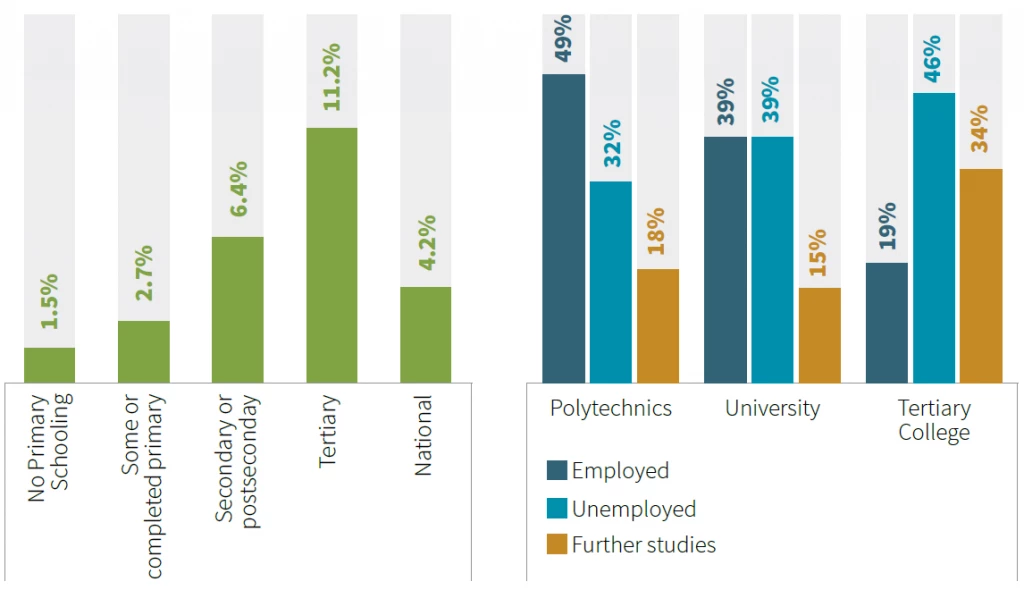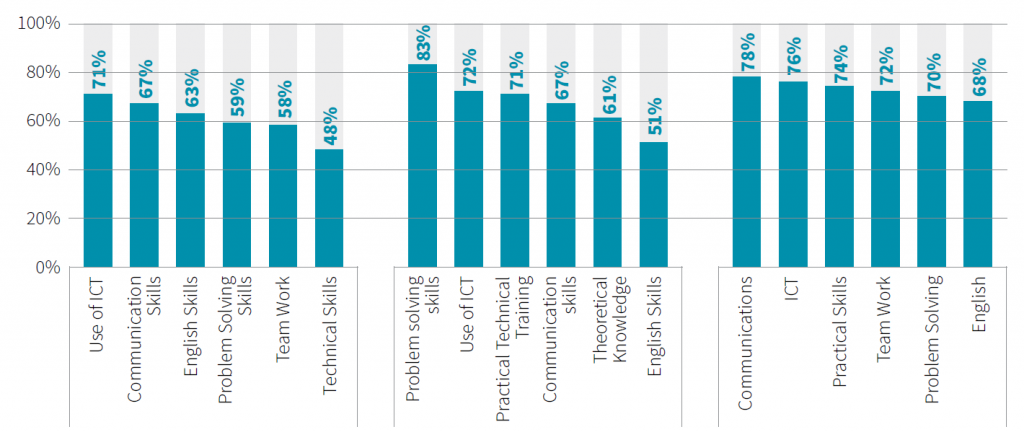 Every year 2 million youth enter the labor force in Bangladesh. For export growth and competitiveness, more investments are needed in education and skills training.
Every year 2 million youth enter the labor force in Bangladesh. For export growth and competitiveness, more investments are needed in education and skills training.
Six years ago, Kamrul Nahar was struggling.
She had lost her father. Making ends meet became a challenge in Netrokona, her rural hometown far away from Bangladesh’s capital.
One of her teachers noticed her hardships and introduced her to vocational training.
He suggested she learn how to use a computer because IT skills were in demand. She did, and her life changed.
Kamrul has big plans now.
“My dream is to open a programming firm,” she says. “I can hire girls who have no fathers, so they may stand on their own feet and do something with their lives.”
Kamrul’s story is one of many examples of how investing in skills can unlock employment opportunities.
Evidently, unemployment stems more from lack of the right skills rather than scarcity of jobs.
According to the 2019 World Development Report, technology will open up jobs and areas of work that do not yet exist.
That trend is already visible in Bangladesh, where the number of young people doing freelance work in programming and designing is growing.
Every year, 2 million youth enter Bangladesh’s labor force.
According to the 2016-17 Labor Force Survey, the unemployment rate of people with tertiary education is 11.6 percent, much higher than the national average of 4.2 percent. For women, this rate is 21.4 percent.
A recent World Bank report shows that Bangladesh’s employment rate is less than 50 percent across all three streams of polytechnics, universities, and colleges (Figure 1).

Years of Graduation (Right)
Even with such high unemployment figures, the country remits vast amounts of money outside in the form of foreign workers.
Evidently, unemployment stems more from lack of the right skills rather than scarcity of jobs.
So how can educated youth be turned into a skilled labor force to lead local and cross-border employment market?
Mostly by improving teaching methods; increasing linkages with private sector; and more collaborative efforts among stakeholders.
But investing in soft skills” like ICT, communication, and problem-solving skills, which are the most sought-after by employers (Figure 2), are the most essential for a skilled workforce.

Skills training is a medium for economic transformation.
The private sector and the industries are at the heart of this transformation as they dictate the labor demands and are the first stakeholders to be exposed to the changing technology.
Thus, we need greater collaboration between industry and academia in defining the changes and how academia can react.
The World Bank’s Skills and Training Enhancement Project has some good examples of such collaboration.
Soft skills help create an adaptive nature and a lifelong learning culture, allowing young people to transition smoothly and cope better with the evolving jobs landscape.
For example, a partnership between the project and Bangladesh Garments Manufacturing and Export Association trained more than 11,000 unskilled workers and achieved an 80 percent employment rate after training.
Collaborations in other areas such as curriculum development support, providing internship opportunities and laboratory/workshop facilities, can have a significant impact too. Effective industry collaboration would make the skills provision demand driven and beneficial for the workers and the industry.


Join the Conversation